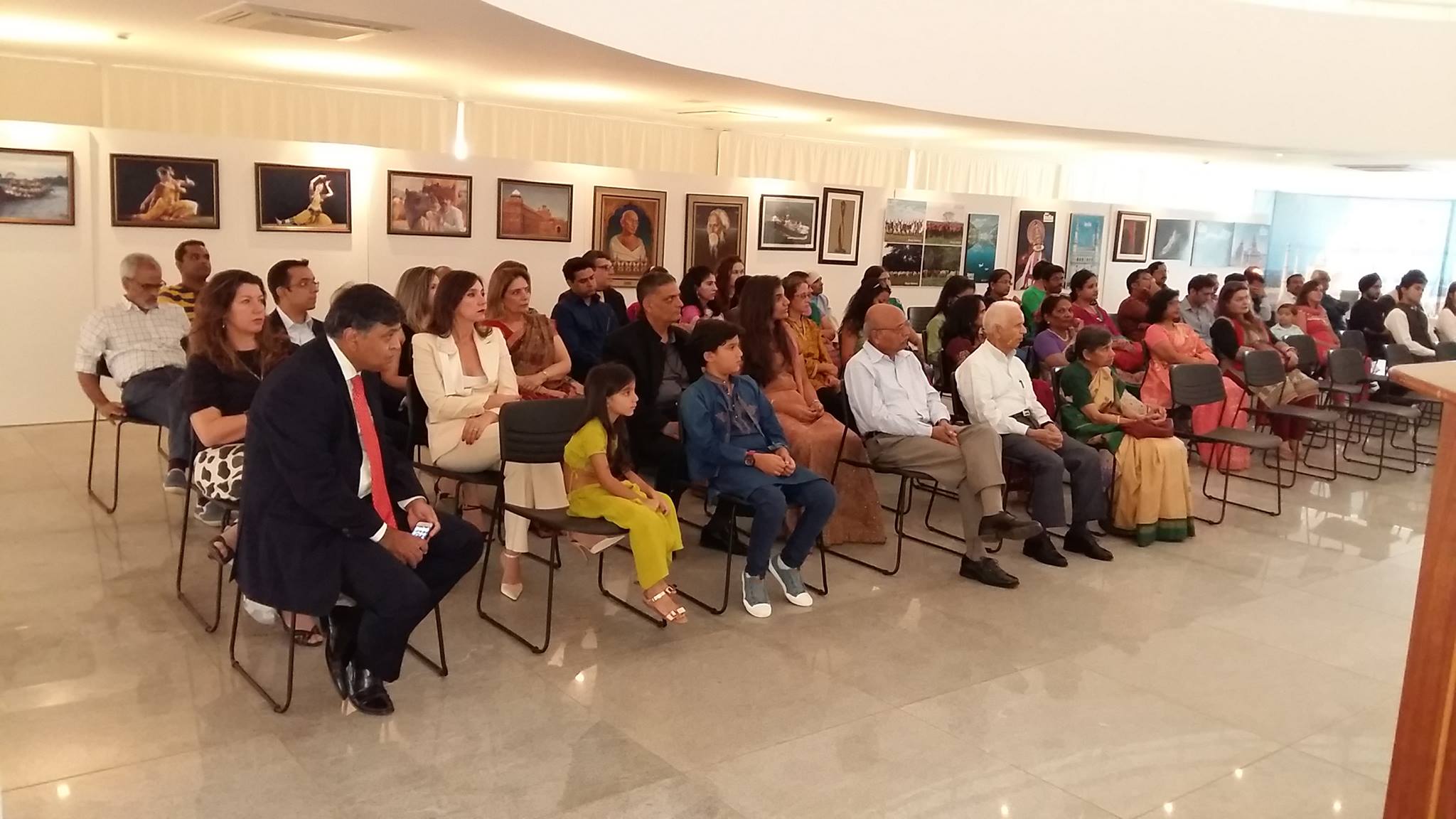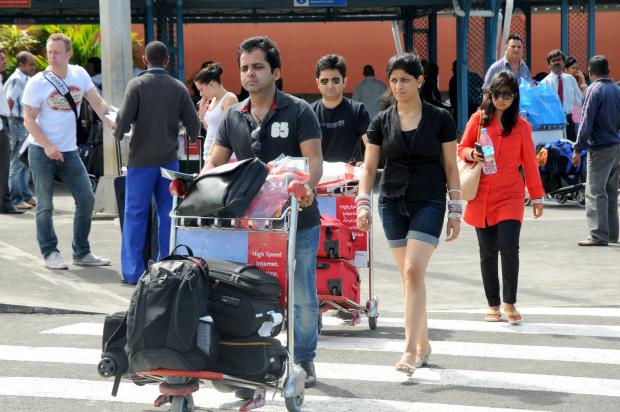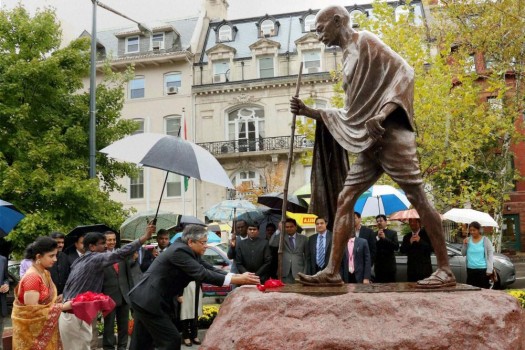Why Are NRIs Being Asked to Change from PIO to OCI? Here’s Everything You Need to Know
At the 14th Pravasi Bharatiya Divas, PM Modi urged the People of Indian Origin cardholders to convert their cards into Overseas Citizen of India (OCI) cards. Here is all you need to know about the PIO-OCI merger, how these categories differ from each other and how this card conversion can help.

Indians make up the largest diaspora: 30 million Indians are scattered across the world, reflecting the country’s demographic size (1.2 billion) and youth (median age is around 26). Over the last two decades, this vast diaspora has come to represent a highly-skilled – doctors, scientists, engineers, finance professionals, and entrepreneurs – group of locals who are respected for their contributions to the societies they live in.

Photo Source
Addressing over 7,000-strong audience of Indian expats at the 14th edition of the Pravasi Bharatiya Divas being held in Bengaluru, Prime Minister Narendra Modi thanked the diaspora for their invaluable contribution to the Indian economy – annual remittance from overseas Indians stood at over $69 billion with India receiving more expat cash than any other country in the world (according to a World Bank report).
The Prime Minister also urged the People of Indian Origin (PIO) cardholders to convert their cards into Overseas Citizen of India (OCI) cards and added that the government was working to put in place procedures for making descendants of the indentured labour living in South Pacific Ocean countries like Fiji (Girmitiyas) eligible for OCI cards.
Here is all you need to know about the PIO-OCI merger, how these categories differ from each other and how the card conversion can help NRIs.

Photo Source
There are three terms you should be familiar with that categorize Indians who live abroad: NRI, PIO, and OCI.
In short, here’s what they mean.
- NRIs (Non-Resident Indians) are Indian Citizens who hold an Indian passport and have temporarily emigrated to another country for six months or more for employment, residence, education or any other purpose.
- PIO (Person of Indian Origin) is a person of Indian origin or ancestry but who is not a citizen of India and is the citizen of another country. A PIO might have been a citizen of India and subsequently taken the citizenship of another country, or have ancestors born in India or other states.
- OCIs (Overseas Citizen of India) is a scheme that was introduced in response to demands for dual citizenship by the Indian diaspora, particularly in developed countries. OCIs are non-Indian citizens who have a lifetime visa to live and work in India with fewer restrictions.
Here’s the detailed explanation for each category.

Photo Source
1. NRI
While OCIs have given up their full Indian citizenship, NRIs are still citizens of India. This is technically a tax classification as opposed to a visa status.
Who can be an NRI?
An Indian citizen residing outside India for a combined total of at least 183 days in a financial year (from April 1 to March 31).
What are the benefits of being a NRI?
- You can get special bank accounts from Indian banks.
- You can continue to own land and property in India.
- Your earnings outside India are not taxed by the Indian government, provided you have paid taxes in the nation you reside in. Local earnings in India (interest, rental income) are still taxed.
- There is a special quota of seats in Indian universities reserved for NRIs.
- You can still vote, but you have to be in India to do it.
What are the drawbacks?
- You may need permission to take out money invested in India.
- You may not purchase agricultural land or farm houses.
- You may not hold a government job.
- You may not be elected to a political position.
How do you become an NRI?
There is no application form needed. The only official record of being an NRI comes on your yearly tax filing. This status can change from year to year. If you wish to open an NRI bank account, you simply need to inform your bank of your plans.
Also Read: An NRI Couple Shows Us How to Return to India and Transform Its Villages
2. PIO
A PIO (Person of Indian Origin) card allows for visa-free travel to and from India.
Who can be a PIO?

Photo Source
Every person of Indian origin who is a citizen of another country (other than those specified by the Indian govt.) is eligible to apply for PIO Card regardless of ethnic origin, so long as they were not born in, or ever nationals of, the prohibited countries specifically mentioned by the Indian government.
- The person used to be an Indian citizen (held an Indian passport)
- The person or at least one parent, grandparent,or great-grandparent who is/was born in and permanently resided in India
- The person is married to an Indian citizen or an existing PIO covered under (1) and (2) above
The following groups of people cannot have OCI status:
- Anyone who was ever a citizen of Pakistan, Bangladesh, Sri Lanka, Bhutan, Afghanistan, Iran, China or Nepal
- Anyone whose parents or grandparents were citizens of Pakistan, Bangladesh, Sri Lanka, Bhutan, Afghanistan, Iran, China or Nepal
What are the benefits of being a PIO?
- A multiple entry, multi –purpose visa for visiting India. PIO Card itself is treated as a Visa
- No separate Student/Employment/Business visa will be required for admission in colleges/intuitions or taking up employment, business, etc in India
- Special counters for speedy immigration clearance at designated Immigration check posts
- Exemption from registration with local police authorities for continuous stay upto 180 days in India
- Exemption from registration with local police authorities for miners upto 16 years of age
- Parity with Non-resident Indians (NRIs) in economic, financial and educations fields except for acquisition of agricultural land or plantations
- PIO Card can be used as identity proof for applying for a (I) PAN card, (II) driving license and (III) opening of Ban account in India, if the PIO card holder resides in India.
What are the drawbacks?
- You may not purchase agricultural land or farm houses
- You may not vote
- You may not hold a government job
- You may not be elected to a political position
- You may not travel to restricted areas without permission
- You may not undertake any missionary work, mountaineering and research work, without the prior permission of the Government of India.
3. OCI
An Overseas Citizen of India is a lifetime visa status. It is the closest thing to dual citizenship that India offers.

Photo Source
Who can be an OCI?
(This list was expanded as of 9 January 2015)
- A person who used to be an Indian citizen
- A person with at least one parent, grandparent,or great-grandparent who is/was an Indian citizen
- A person married to an Indian citizen or an existing OCI for at least two continuous years
The following groups of people cannot have OCI status:
- Anyone who was ever a citizen of Pakistan or Bangladesh
- Anyone whose parents or grandparents were citizens of Afghanistan, Pakistan, Bangladesh, China, or Sri Lanka
- Anyone who served in a foreign military or worked in a foreign defense department
What are the benefits of being an OCI?
- Lifelong multiple entry visa to India
- You can eventually become a citizen of India if you remain an OCI for 5 years and live in India for at least 1 year (short breaks are now allowed)
- You can use special counters during immigration
- You don’t need a student/employment visa to study or get a job in India
- You can open a special bank account in India, just like an NRI
- You can make investments in India, buy non-farm property and exercise property ownership rights
- Your can use your OCI card to apply for a driver’s license, open a bank account, or get a PAN card
- You get the same economic, financial, and education benefits as NRIs
- You pay the Indian resident fee when visiting a national parks, monuments, museums or wildlife sanctuary (of course it is ultimately up to the discretion of the man issuing tickets)
What are the drawbacks?
- You may not purchase agricultural land or farm houses
- You may not vote
- You may not hold a government job
- You may not be elected to a political position
- You may not travel to restricted areas without permission
Difference between PIO and OCI
The difference is the eligibilty criteria. The PIO scheme covers upto four generations and the foreign spouse of an Indian national or a PIO/OCI card holder. On the other hand, for the OCI card it is mandatory to be eligible in your own terms i.e a foreign national is not eligible for the OCI card even if he/she is married to a valid OCI card holder. However, their children will be eligible.
Why the decision to convert PIO to OCI?
According to the Citizenship Amendment bill, 2015, all PIO card holders are ‘deemed to be’ to be OCI card holders with effect from January 9, 2016. However, the act did not specify that the cards will need to be changed. This has led to serious implementation issues with the PIO-OCI merger resulting in much confusion at Indian embassies and immigration portals abroad. Also, the PIO cards will not be compatible with the card reading machines to be installed at Indian airports soon.
This is why the Indian government announced the decision to convert PIO cards to OCI before December 31, 2016. The deadline was recently extended from 31 December last year to 30 June, without any penalty.
How do you become/convert to an OCI?
You can apply through the Indian embassy in your country of residence or within India at the local FRRO.
Here is a sample of documentation you will need (see your local consulate for a specific list):
- Proof of present citizenship
- Proof of former Indian citizenship (for you or your relative)
- Proof of renunciation of Indian citizenship (if applicable)
- Proof of relationship to an Indian citizen
The entire process can take several months in some cases. Fees vary from nationality to nationality. If you apply in India, the fee is Rs. 15,000 for an adult or Rs. 8,000 for a minor. You can convert a PIO card to an OCI card if you qualify, and the fees are very nominal.
You can start the process by going to http://passport.gov.in/oci/.
Like this story? Have something to share? Email: contact@thebetterindia.
NEW! Log into www.gettbi.com to get positive news on Whatsapp.

Similar Story

Why a Telangana Village Will Be Paying Close Attention to Biden’s Inaugural Address
When United States President-elect Joe Biden takes the stage on 20 January 2021 to deliver his inaugural address, many of the most important words will come from the mind and keyboard of an Indian-American, whose family maintains its roots in Telangana.
Read more >
If you found our stories insightful, informative, or even just enjoyable, we invite you to consider making a voluntary payment to support the work we do at The Better India. Your contribution helps us continue producing quality content that educates, inspires, and drives positive change.
Choose one of the payment options below for your contribution-
By paying for the stories you value, you directly contribute to sustaining our efforts focused on making a difference in the world. Together, let's ensure that impactful stories continue to be told and shared, enriching lives and communities alike.
Thank you for your support. Here are some frequently asked questions you might find helpful to know why you are contributing?


This story made me
-
97
-
121
-
89
-
167












